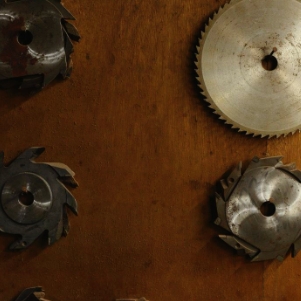
The Passion

Katsuhiro
The struggle to continue the tradition
Hakone Yosegi-Zaiku can't continue like this

When Mr. Kanazashi was in his early elementary school years, there were 50 households in Hatajuku, and Hatajuku at that time was centered around this traditional woodcraft. There were 14 or 15 houses that worked making Yosegi-Zaiku products, and even the houses that did not do it had members that were employed or connected with the craft in some way; almost every house had a Yosegi shop. As time went by, Yosegi-Zaiku became less and less viable as a business because it requires a lot of time and effort. Many people moved on to other woodworking products, and Yosegi-Zaiku was in danger of losing the next generation of craftspeople. Kanagawa Prefecture and the town of Hakone felt a growing sense of crisis and took the initiative to gather five or six masters to hold a study session.
Mr. Kanazashi's grandfather had originally been a Yosegi-Zaiku craftsman, but the ability for many to continue economically had nearly died out by his grandfather's generation. It was not until his father's generation that he was able to start his own business. By this time, he had turned into a craftsman who created the wooden bodies for televisions and radios. Mr. Kanazashi participated in the study session with the thought that there were still more possibilities with Yosegi-Zaiku. He became determined to "not let Yosegi-Zaiku just be forgotten."
Overcoming the lack of support to find a way to live by Yosegi-Zaiku.
He decided, "If I'm going to do this, I might as well do a type of solid Yosegi-Zaiku, which no one else was doing," and worked hard to learn it (Odawara City craftsmen made use of the technique at the time, but not as a product).
The unique technique is called "Muku-Zukuri," creating a three-dimensional work by carving a Taneita (solid block of woods) itself on a potter's wheel. The result is a method that is still in use today. He became more and more absorbed in the art of making objects, "Muku-Zukuri."
Because "Muku-Zukuri" is made by hollowing out a Taneita with a potter's wheel, it can be used to make trays, bowls, small round tables, etc., and other rounded objects with curves. However, he met opposition from those around him who were supposed to have taught him the craft techniques.
"You can't make a living with Yosegi."
I asked my father, "If that's the case, I want to be free for three months, and if I can't sell
anything, I'll give up." They reluctantly agreed with this offer.
The town of Hakone supported Mr. Kanazashi's decision. and even offered "to buy the products if they did not sell." These words were support and encouragement for him to try and push him forward. He took his work to various shops and stores to sell. The response was better than expected, and the town didn't have to purchase any items. The product was extremely popular.
"I was working 360 days out of the 365 in the year," said Mr.Kanazashi. He had succeeded in proving his father and the other master craftsmen before him who said he wouldn't be able to "feed himself by making Yosegi-Zaiku" wrong.

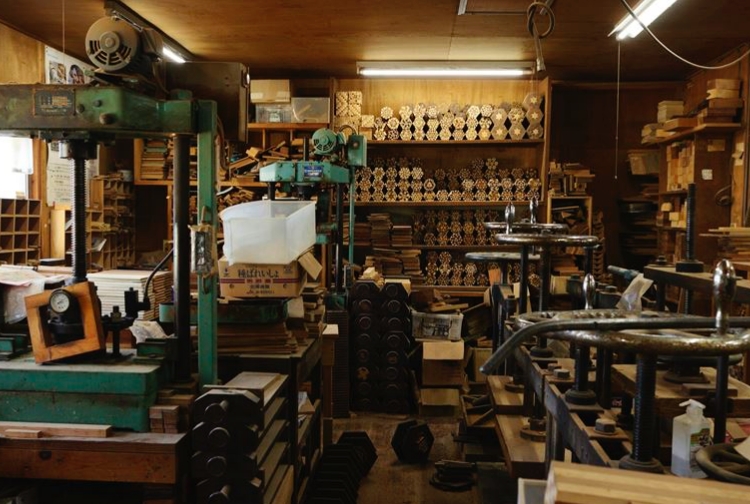
The prestigious Hakone Ekiden Championship Cup
A theme and design that takes a year
In 1996 I was asked if the techniques I had been using could be adapted to create the winning trophy for the Hakone Ekiden (a collegiate relay marathon race run between Tokyo and Hakone over two days ). They consulted me, and I answered, "I can do it" "Please, let me do it." By agreeing to do this, I would be challenged to make a new trophy every year with a different theme and design. The event was held on January 1st and 2nd and watched by people all over the country, so it was important to keep the theme current and inspirational.
For example, when Mt. Fuji was chosen as a UNESCO World Heritage site, we used the shape of the mountain as a basis for our design with the famed image of the mountain being reflected in the lake below. When the Tokyo Skytree was completed, we did a design for the championship trophy inspired by it.
Every year, we search for a theme until the very last minute before starting production and then look for a design of Yosegi-Zaiku appropriate to that theme. In other words, we have to start production in October, so we have to decide on a theme by that time.
There are no design drawings or plans. His unique style is to first decide on the design in his mind and have it develop and shape mentally as he imagines carving it out. This year, he will again continue to search for a theme and an inspirational design until the very last minute.

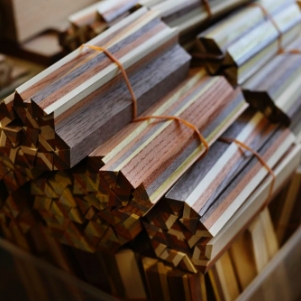
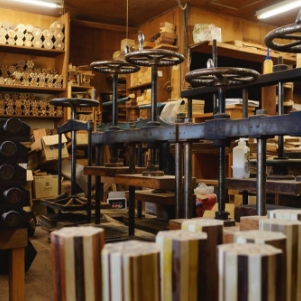
Revival of Yosegi Village
This is where I will dedicate my
all
"When I was a child, you could see boards out to dry for Yosegi-Zaiku all over the village. The whole
community had a sense of unity as a Yosegi village."
"I hope that people who visit Hatajuku will feel that this is the birthplace of Hakone-Yosegi
-Zaiku. I dream of a revival of the importance of this craft for this town."
Even though he is over 80 years old, Mr. Kanazashi still talks about his dreams.
He is not just dreaming. He is working to achieve these dreams even now. One such example is his efforts to grow some of the trees used for Yosegi-Zaiku near his store. Since the area has become a national park, lumber from the Hakone mountain range cannot be used. There was a desire to allow people to see the type of trees and wood used as materials to make Yosegi-Zaiku come from. People can come to see the materials and products in one place now.
The signboards with the words "Hakone-Yosegi-Zaiku Village" hang throughout the town.
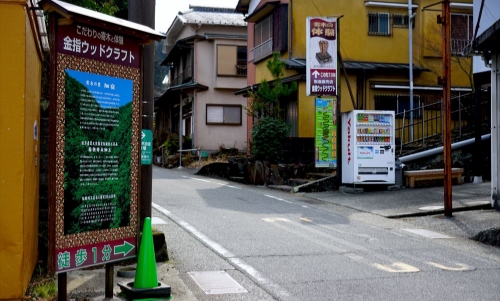
MOVIE
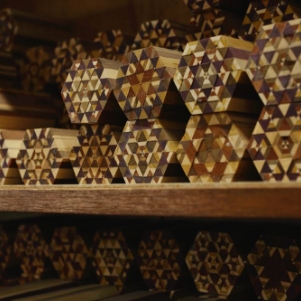
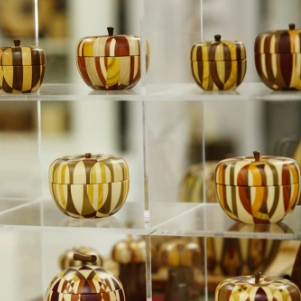
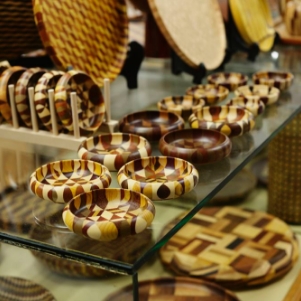

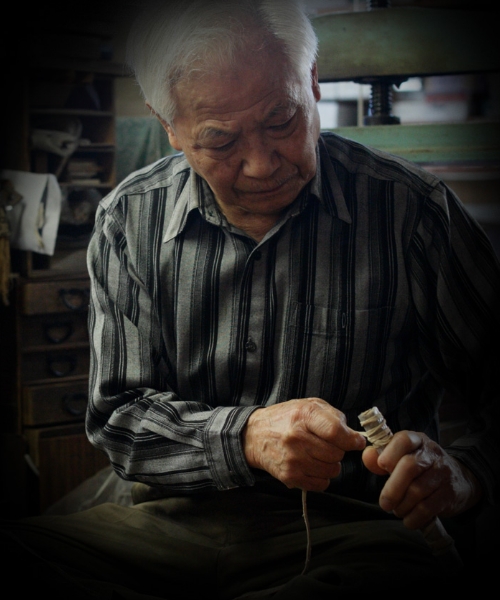

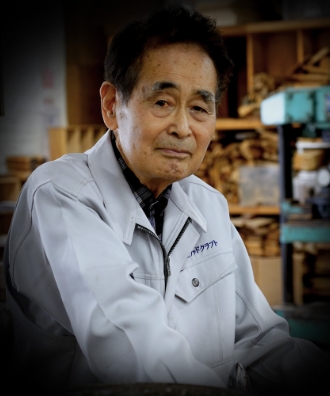
I have heard that craftsmen never actually retire, and in Hatajuku they are the inspiration and the light that continues to shine brightly.